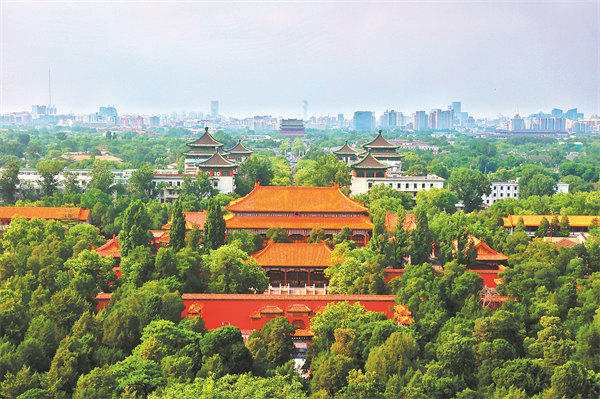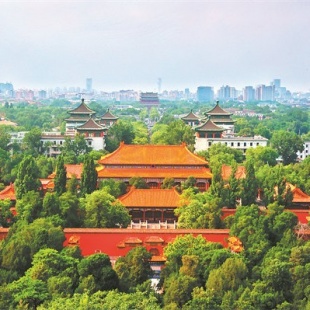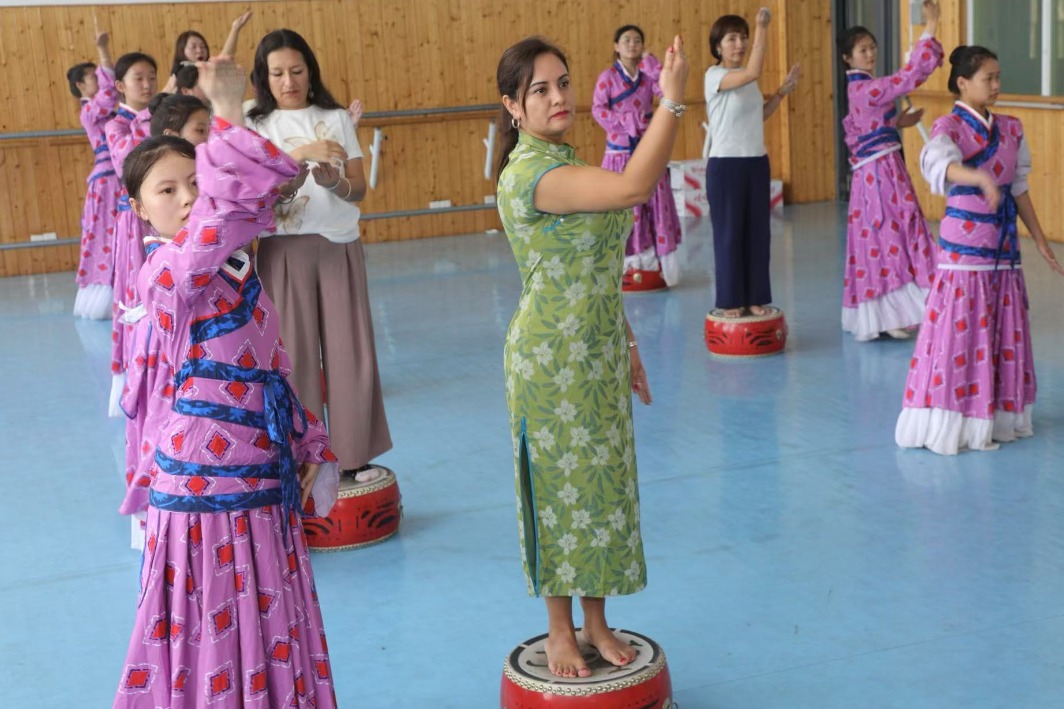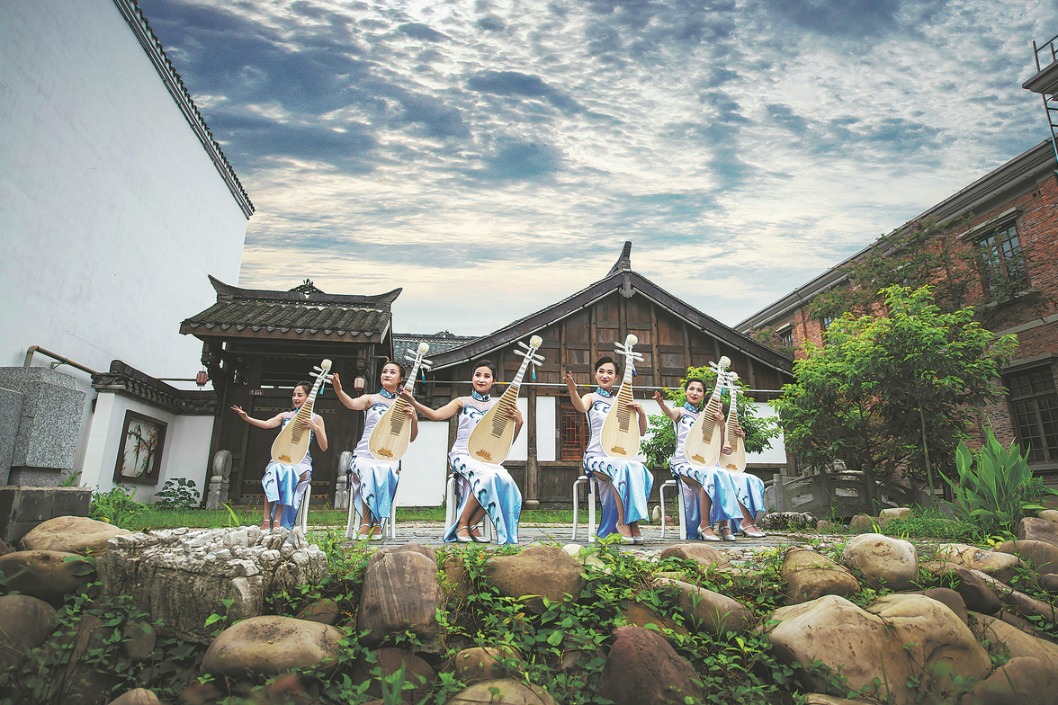Key measures will boost Beijing's Central Axis' sustainability


To mark the first anniversary of the Beijing Central Axis' World Heritage inscription, capital authorities released a three-year action plan focusing on protection of the route on Sunday. It outlined 45 key tasks to safeguard this 7.8-kilometer ensemble of palaces, ceremonial and public buildings, roads and other aspects that govern the overall layout of the old city area of the Chinese capital.
During the 46th session of the World Heritage Committee in New Delhi on July 27, 2024, "the Beijing Central Axis: A Building Ensemble Exhibiting the Ideal Order of the Chinese Capital" was inscribed on the UNESCO World Heritage List.
"Through the efforts to secure World Heritage status for the Beijing Central Axis, the profound historical and cultural value of the axis has been thoroughly explored," Rao Quan, director of the National Cultural Heritage Administration, said in his speech at the Sunday ceremony in Beijing to mark the anniversary of the inscription. "It has also helped drive the integrated conservation of the capital's old city area and thus prolonged Beijing's lineage of history and culture," he said.
Its construction began in the 13th century and was basically formed in the 16th century. This resulted in the Central Axis stretching north to south through the heart of Beijing and it has undergone constant refinement over the past centuries and continues to influence the city's urban development to this day.
"The systematic and holistic approach of this plan offers invaluable experience not only for the Beijing Central Axis but for all heritage sites, cultural relics and historic districts citywide," says Ye Nan, who works at Beijing Municipal Institute of City Planning and Design.
According to Beijing Municipal Cultural Heritage Bureau, authorities accelerated the relocation and restoration of key sites along the axis over the past year. In October, non-historic structures northwest of the Imperial Ancestral Temple were removed and transformed into green space.
Other major projects include reclaiming the former army and navy department of the Qing Dynasty (1644-1911) and Prince Fu's Mansion, both in Dongcheng district, and Prince Chun's Mansion South Compound in Xicheng district, according to the bureau.
"Public access has expanded at Qingcheng Palace complex in Xiannongtan, or the Altar of the God of Agriculture, and the archery tower at Zhengyang Gate, reinforcing the axis' spatial order," Ye says.

With the opening of the Qingcheng Palace complex and the archery tower at Zhengyang Gate late last year, new cultural-tourism experiences, including themed trails and study tours, have been brought to visitors from home and abroad.
"Future expansions at Xiannongtan will restore its historical ambiance while building it into an international cultural exchange platform," says Xue Jian, director of the Beijing Ancient Architecture Museum, which manages the altar.
According to the plan, the restoration work on Yongding Gate, on the south end of the axis, is also advancing and will reopen to the public upon completion.
At the 2025 Beijing Culture Forum, Qingcheng Palace is listed among the 17 cultural venues in the capital to host the forum salon's upcoming activities, aiming to enhance the dynamic utilization of the city's historical cultural heritage spaces.
To better protect and display the values of the Central Axis area, authorities have applied cutting-edge technology, including 5G, internet of things and artificial intelligence. Since 2023, the Beijing Central Axis World Cultural Heritage Monitoring and Protection Platform has encompassed 17 categories and 69 specific indicators in the area's daily protection and management, according to Zhou Ziyu, from the platform.
He says that all the data, such as temperature, humidity and structural subsidence, collected by devices installed in or near the ancient structures will be transmitted in real time to the platform.
The public are also invited to take part in the daily monitoring and conservation. Statistics from the platform show more than 700 patrol volunteers and about 28,000 digital watchkeepers have submitted over 80,000 inspection records online.
"These figures represent a whole-of-society preservation model," Zhou says.
Since May, the revised regulations to protect the Beijing Central Axis cultural heritage have been enacted to enhance sustainable development while promoting global recognition.
To celebrate the inscription's anniversary, a Chinese-English bilingual book, Beijing Central Axis: A Building Ensemble Exhibiting the Ideal Order of the Chinese Capital, published by the Beijing Publishing Group, was released on Sunday, containing hundreds of architectural surveys, maps and rare historical images.
Meanwhile, two public competitions in cultural heritage innovation and design are open for global submission, which can effectively help raise public awareness of the Beijing Central Axis, encouraging participation in its preservation, and enabling the public to share the benefits of its protection.





































